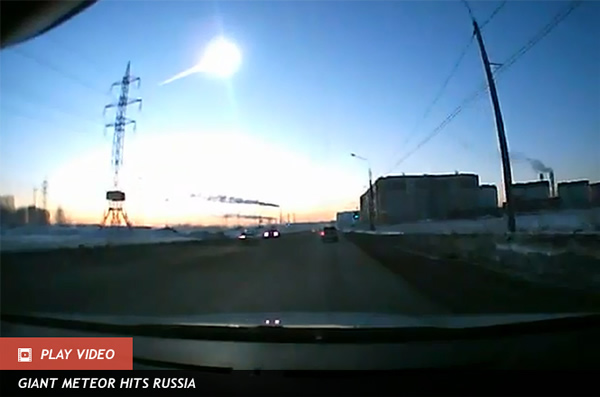Russian Meteor Shock Rippled Around Earth, Twice
Russian Meteor Shock Rippled Around Earth, Twice
When a meteor slammed into the atmosphere over the Russian Urals region on Feb. 15, 2013, the huge quantity of energy released was encapsulated in a powerful shock wave that blasted the city of Chelyabinsk, causing property damage and inflicting over 1,500 injuries. Now, after analysis of data gathered by global detectors used to detect ultra-low frequency acoustic waves, scientists have revealed that the meteor’s shock wave traveled all the way around the globe, twice.
The International Monitoring System (IMS) network operated by the Comprehensive Nuclear-Test-Ban Treaty Organization (CTBTO) is used to detect infrasound evidence of nuclear tests, but on that February morning, the network detected the most powerful event it had ever seen. But this signal wasn’t a nuclear weapon, it was a high-speed, 10,000 ton chunk of space rock carrying out a surprise attack on Russia.
“For the first time since the establishment of the IMS infrasound network, multiple arrivals involving waves that traveled twice round the globe have been clearly identified,” writes Alexis Le Pichon, scientist of the Atomic Energy Commission, France, and his team in a paper that has been accepted for publication in the journal Geophysical Research Letters.
Le Pichon’s team used data from 20 IMS stations around the globe to estimate the energy of the Chelyabinsk event: “A preliminary estimate of the explosive energy using empirical period-yield scaling relations gives a value of 460 kilotons of TNT equivalent,” they add. This means the Russia meteor delivered an equivalent energy of nearly 30 Hiroshima-sized atomic bombs in the skies over Chelyabinsk.
This IMS estimate confirms that this meteor strike is the largest impact since the 1908 Tunguska event that flattened 80 million trees over an area of 2,150 square kilometers (830 square miles). That event, however, is estimated to have delivered 10-15 megatons of TNT equivalent to the atmosphere, generating an immensely powerful shock wave that caused chaos over a wide and, fortunately, sparsely populated area.
The Russian meteor quickly brought attention to the number of small asteroids that are out there, capable of remaining undetected (the Russian meteor was only 17 meters wide) and yet still deliver a shocking punch to a populated region.(Jun 28, 2013 12:01 PM ET // by Ian O'Neill)












